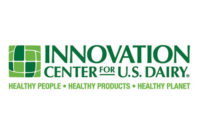Five dairy processors, accounting for more than 20% of U.S. milk production, have committed to a voluntary set of best practices for traceability. They are Darigold, Glanbia Foods, Hilmar Cheese Co., Leprino Foods and Michigan Milk Producers Association.
Drawing from a pilot study of dairy processors, the Innovation Center for U.S. Dairy, Rosemont, Ill., this week released the practices, which were designed by processors, for processors, to increase global competitiveness, help satisfy future requirements of the Food Safety Modernization Act and, in the rare event of a safety issue, quickly isolate products to protect public health and prevent brand damage.
In the coming months, all processors will be asked to make the U.S. Dairy Traceability Commitment stating they will voluntarily adopt and apply the practices. The new guidelines do not affect producers and on-farm practices.
“Our 80% goal by September 2014 is ambitious but attainable,” said Dermot Carey, chairman of the Innovation Center’s Traceability Subcommittee, which developed the best practices. “As an industry, we want to be the global leader for dairy traceability.”
The best practices include three pillars of dairy traceability:
- Modeling physical plants to know where new lots enter and where products transform
- Creating a lot identifying mark that will be recognized and used by customers
- Enhanced record-keeping that will assist in expedient and effective recall capability
The Innovation Center’s website offers several resources, including an in-depth document, “Guidance for Dairy Product Enhanced Traceability,” which offers voluntary practices and protocols for strengthening the U.S. dairy supply chain. It features a one-page, 21-point traceability checklist.
Implement best practices in dairy traceability with pencil, paper
“We designed these best practices to be workable for processors large and small,” said Edith Wilkin, a subcommittee member and the vice president of food safety and regulatory compliance at Leprino Foods. “You do not need enterprise resource planning software or other technologies. You can implement with paper and pencil in just a few minutes a day.”
The pilot study, encompassing processors of various sizes and sectors, confirmed that traceability is nothing new for U.S. dairy. Processors have long had effective programs in place.
“What we have done is establish national, industry-wide best practices that will only enhance current traceability programs,” said Carey, senior vice president of the ingredients division at Darigold. “Because traceability is part of the increasing price of admission to compete both domestically and globally, these practices are in the best interests of processors and the entire dairy industry."
The Innovation Center, established under the leadership of America’s dairy producers through the dairy checkoff program, considers enhanced traceability guidelines a priority not only for improving global competitiveness, but also for supporting customer and consumer confidence.
To learn more, visit the Innovation Center’s traceability best practices page at usdairy.com. Or contact Vikki Nicholson at vnicholson[at]usdec.org or 703-469-1522.



